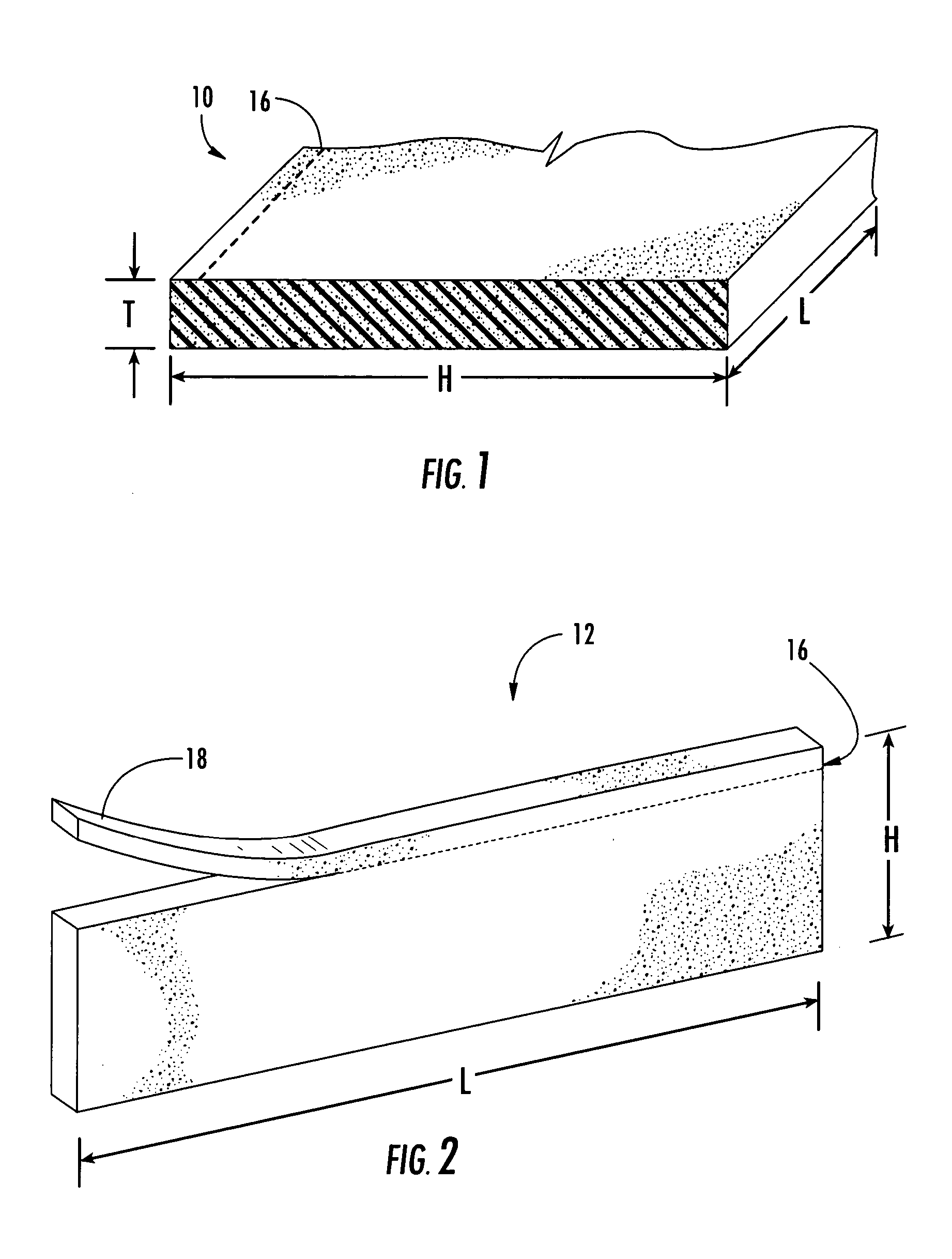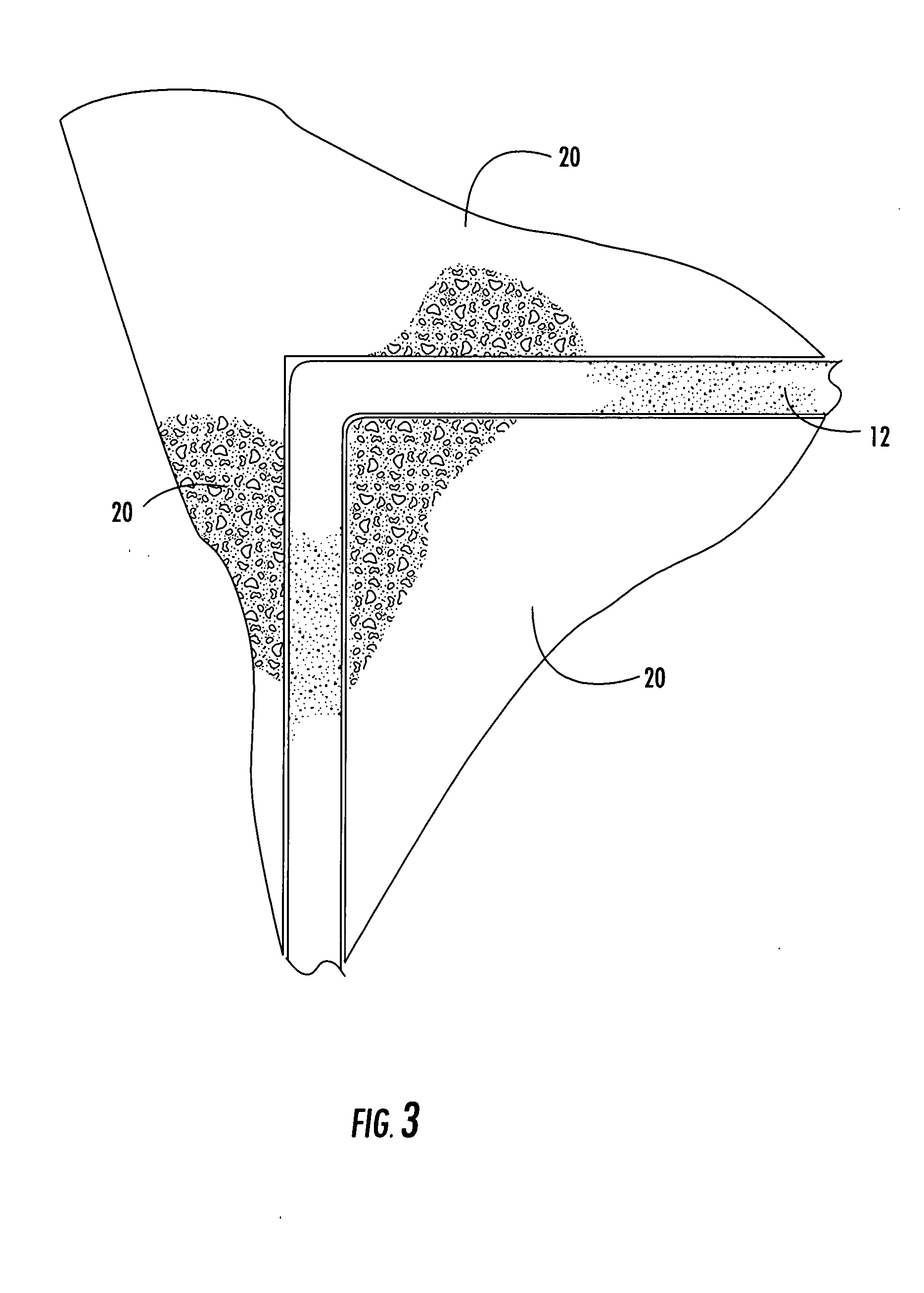Blended foam having improved flexibility at sub-freezing temperatures
a polyethylene foam and sub-freezing temperature technology, applied in the field of polyethylene foams, can solve the problems of low temperature resistance of polyethylene foam, low flexural modulus of extruded foam sheets made therefrom, and non-linear cracks, etc., and achieve the effect of improving flexibility
- Summary
- Abstract
- Description
- Claims
- Application Information
AI Technical Summary
Benefits of technology
Problems solved by technology
Method used
Image
Examples
example 1
[0041] The foam blends in example 1 were prepared with a twin-screw extruder. The following ingredients were used. [0042] polypropylene homopolymer Model No. PF814 available from Basell Polyolefins (about 0.9 g / cc and 3 Melt Index (MI)); [0043] 2.3 MI, 0.919 g / cc LDPE available from Nova; [0044] styrene-isoprene-styrene rubber component grade Model No. Europrene Sol T 190 available from Enichem; and [0045] Endothermic Nucleating agent, Hydrocerol CF-20, available from Clariant for nucleating fine cells.
[0046] The above resin and additives were added into the feed hopper. Isobutane was mixed with the molten resin and additives and the melt was allowed to cool. The cooled mixture was extruded through an annular sheet die. The extrusion conditions and foam density are given in the following Table 1.
TABLE 1Extrusion process formulation and conditionsExtrudedFoamPPLDPERubberIsobutaneMelt Temp.Die Pressure,Density,Sample(Lbs / hr)(Lbs / hr)(Lbs / hr)(Lbs / hr)(° F.)(psi)(pcf)1160 (80%)40 (20%)...
example 2
[0048] A twin-screw extruder was used to make PP / LDPE / rubber blend foam. The extrusion conditions are shown below in Table 3. The line output rate was held at 500 lbs. / hr. The composition details are given in Table 3. For example, for sample 6, the percentages of polypropylene (PP), low density polyethylene (LDPE), styrene-isoprene styrene (SIS) rubber, ultraviolet inhibitor (UVI), and black colorant are 75.6%, 20%, 0%, 2.4%, and 2.0%, respectively. In addition to the mentioned additives, a talc masterbatch was added at 0.4% by weight to nucleate fine cells. The chemical ingredients used are listed below: [0049] polypropylene homopolymer Model No. PF814 available from Basell Polyolefins [0050] LDPE—2 MI, 0.919 g / cc LDPE available from Nova; and
[0051] styrene-isoprene-styrene rubber component Model No. Europrene Sol T 190 available from Enichem.
TABLE 3Extrusion process formulation and conditionsSISBlackDiePPLDPErubberUVIcolorantOutputMeltIsobutanePressureSamplelb / hrlb / hrlb / hrlb / hr...
example 3
[0055] A twin-screw extruder was used for this experiment. The foam was extruded in a cylindrical rod shape. Glycerol monostearate was used as an aging modifier to stabilize the foam and was added 1.6% by weight. Talc masterbatch was added 1.5% by weight to nucleate fine cells. The resin and additives were fed through the hopper and the molten polymer was mixed with the isobutane foaming agent. The mixture was then allowed to cool and pass through a capillary nozzle to result in a cylindrical rod shaped foam for evaluation and testing. The extrusion conditions are shown in Table 5 below. The ingredients used are given below. [0056] PP—0.902 g / cc, polypropylene homopolymer [0057] LDPE—2.3 MI, 0.919 g / cc LDPE [0058] styrene-isoprene-styrene rubber component Model No. Europrene Sol T 190 available from Enichem; and
[0059] EVA—0.925 g / cc, 4.6 by wt % Ethylene / vinyl acetate copolymer
TABLE 5Extrusion conditions and process formulationOutputIsobutaneMeltrate,rateTemp.Die PressureTorque,S...
PUM
| Property | Measurement | Unit |
|---|---|---|
| Temperature | aaaaa | aaaaa |
| Temperature | aaaaa | aaaaa |
| Temperature | aaaaa | aaaaa |
Abstract
Description
Claims
Application Information
 Login to View More
Login to View More - R&D
- Intellectual Property
- Life Sciences
- Materials
- Tech Scout
- Unparalleled Data Quality
- Higher Quality Content
- 60% Fewer Hallucinations
Browse by: Latest US Patents, China's latest patents, Technical Efficacy Thesaurus, Application Domain, Technology Topic, Popular Technical Reports.
© 2025 PatSnap. All rights reserved.Legal|Privacy policy|Modern Slavery Act Transparency Statement|Sitemap|About US| Contact US: help@patsnap.com



